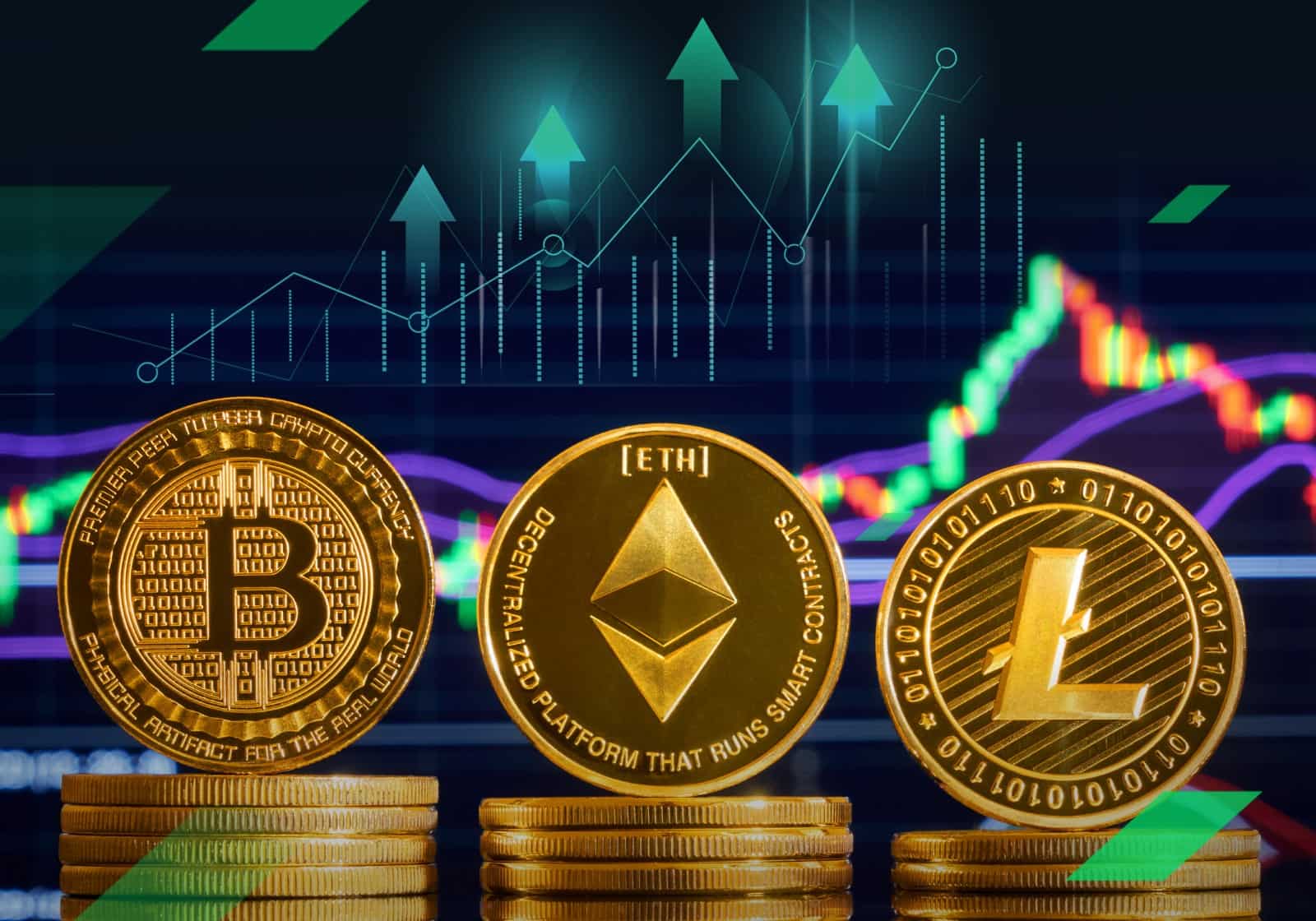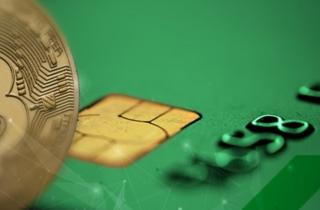Deflationary cryptocurrencies list

The world is changing rapidly, and digital finance is having a bigger effect on our lives than we ever could have imagined. Blockchain technology has brought a new era of digital finance, leading a growing number of people to invest in cryptocurrencies and add digital assets to their investment and trading strategies. The number of cryptocurrencies available in the market is also growing quickly. With more than 11,000 cryptocurrency projects available, the cryptocurrency market capitalisation makes up more than $2 trillion, and analysts expect this number to continue to rise.
Deflationary cryptocurrencies play a big part in this. What's the meaning of deflationary crypto, how are they designed to reduce supply, and which assets should be included in the deflationary cryptocurrencies list? Let's find it out.
What is a deflationary cryptocurrency?

A deflationary crypto is a digital currency designed to reduce supply over time. The main goal of deflationary cryptocurrencies is to prevent the digital finance market from being flooded with digital assets over time while increasing the currency's value.
In a perfect scenario, deflationary cryptos reduce their supply by 2% on an annual basis. Let's do some maths. If there are 50,000 coins in supply in 2022, by 2023, that number will be 49,000, 48,020 by 2024, 47,060 by 2025, and so on. The reduced supply of currencies will result in increased demand for the crypto in question and boost its value.
Deflationary crypto projects use two common methods to remove coins from the market:
- Buyback-and-Burn. As the name of the method suggests, the company in charge of the project buys back a large number of its coins from the market and burns them by sending the coins to a dead address. In doing so, it destroys the coin's circulating supply by destroying the crypto assets. The most popular deflationary cryptocurrencies using this method include BNB, FTT and CAKE.
- Burn-On Transactions. With this method, the coin's contract specifies that the percentage of the tax collected from on-chain transactions will be burned. The success of this method depends on the coin's trading volume because the deduction takes place only when a transaction takes place. The higher the trading volume is, the more coins are removed from the total supply. The top crypto assets using the Burn-On Transaction method include SAFEMOON and THUGS.
Deflationary crypto meaning
Digital assets featured in the deflationary cryptocurrencies list aim to solve issues faced by the traditional finance sector. Therefore, deflationary cryptos have a positive impact on the digital currencies sector through such features as:
- Profit maximisation. The decrease in supply leads to an increase in demand for the crypto assets, which drives up the coins' value.
- Fixed supply. Instead of flooding the market, the deflationary mechanism is designed to remove coins from circulation. If coins are issued incorrectly, the only way to fix the mistake would be to burn the access coins and only keep the required number of coins.
Best deflationary cryptocurrencies list
With that said, let's review the top deflationary crypto coins in the digital finance world.

Bitcoin (BTC)
There's no doubt that Bitcoin is synonymous with cryptocurrency for many of us. One of the first digital assets ever to be released in the digital market comes first on the deflationary cryptocurrencies list for a reason. Bitcoin is both an inflationary and deflationary crypto. It's inflationary in the sense that more coins are added to the supply via the mining process. Bitcoin is also deflationary because miners' rewards are halved once every four years.
The maximum supply of Bitcoins is 21 million. Once this number is reached, no more coins will be created, and miners will get no more block rewards.
Binance Coin (BNB)
The native coin of the Binance network uses the Buyback-and-Burn approach, through which the Binance team diminishes the amount of BNB coins. They repurchase coins from investors who made more than 20% profit in the last quarter and send them to dead addresses.
Initially, the total supply of Binance coins was 200 million deflationary crypto coins. The Binance network had a plan to burn roughly half of them to reach 100 million coins. On 18 October 2021, Binance completed the 17th quarterly BNB burn, when 1,335,888 BNB were burnt. As of 16 January 2022, the total supply of BNB coins is 166,801,148.00 BNB.
Litecoin (LTC)
LTC mining rewards are halved once every four years, making Litecoin production decrease over time. It will stop once the supply number reaches 84 million coins.
PancakeSwap (CAKE)
The native coin of the PancakeSwap ecosystem comes next in our deflationary cryptocurrencies list. Although the crypto asset doesn't have a maximum supply, it uses the Coin Burn approach to keep its supply in check. CAKE's supply is reduced every day by -560,400 and by block at -18.
Polygon (MATIC)
The native token of the Polygon Network serves two major goals: to pay transaction fees and participate in the PoS consensus mechanism. As described in its official docs, Polygon's transaction fee percentage in every block is burned to provide constant support for the MATIC coin's value.
Ripple (XRP)
XRP is another deflationary cryptocurrency worthy of being mentioned in this list. When mining XRP, you need to pay fees for every transaction. These charges are not sent to any central authority or as a reward to the validators. Instead, they're burned, making XRP a deflationary crypto coin.
SafeMoon (SAFEMOON)
This deflationary cryptocurrency coin was released as a solution to issues with 'farming' rewards, where early stakers earn significant rewards from the highest APYs, and newcomers don't generate much profit. SAFEMOON uses the Burn-On Transaction method and charges a 10% fee per transaction. The contract sells 2.5% of this charge into BNB (burning).
Solana (SOL)
Similar to Bitcoin, SOL is both an inflationary and deflationary crypto coin. It's inflationary in the sense of its capless supply and deflationary because of Solana transaction fees (paid in SOL).
Terra (LUNA)
The native coin of the Terra ecosystem comes next on the deflationary crypto list. The maximum supply of LUNA is 1 billion coins, all of which were issued at the project's genesis. With the increased demand for deflationary crypto, the circulating supply will be reduced over time.
TRON (TRX)
TRX is the native coin of the TRON network dedicated to promoting digital decentralisation. The TRX coin moved from inflationary to deflationary in April 2021, when the total supply of the TRX coins was reduced to 101,673,029,723 in response to a proposal from the TRON community.
Conclusion
The deflationary cryptocurrencies list includes the top cryptocurrencies based on the StormGain team's choice. There are other deflationary crypto coins available, too, including Ethereum Classic (ETC), Tenset (10SET), Filecoin (FIL), Bomb (BOMB), Nuke (NUKE) and more. Their value also increases as the percentage of their supply burns over time. Their rarity makes such coins a profitable investment because they are resistant to surges in inflation.
Tags
Try our Bitcoin Cloud Miner and get additional crypto rewards based on your trading volume. It's immediately available upon registration.
Try our Bitcoin Cloud Miner and get additional crypto rewards based on your trading volume. It's immediately available upon registration.



